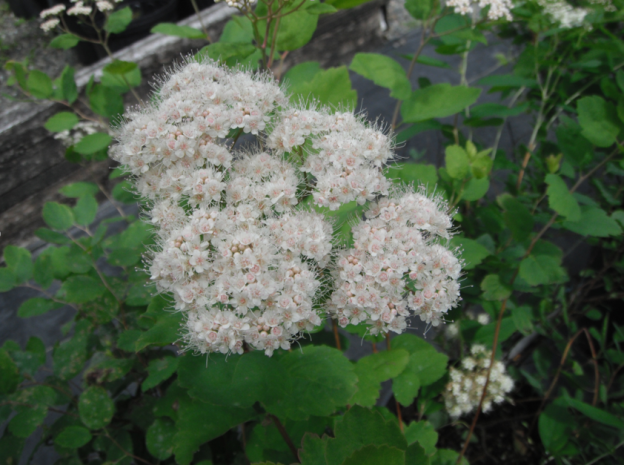
Shinyleaf Spiraea, Spiraea lucida
Shinyleaf Spiraea The Rose Family–Rosaceae Spiraea lucida Douglas ex Greene (spy-REE-uh LOO-sih-duh) Names: The word Spiraea […]


Shinyleaf Spiraea The Rose Family–Rosaceae Spiraea lucida Douglas ex Greene (spy-REE-uh LOO-sih-duh) Names: The word Spiraea […]
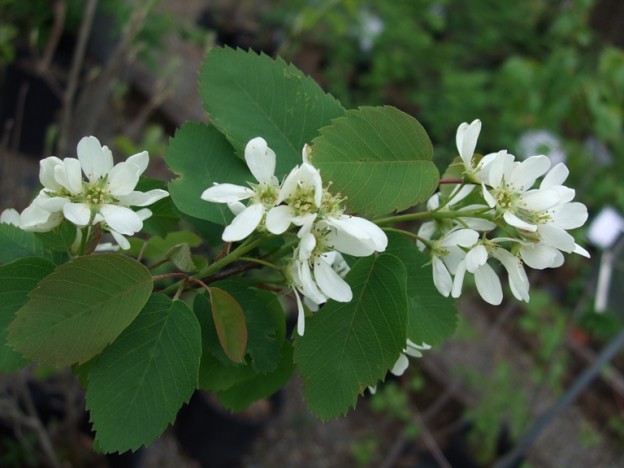
Saskatoon Serviceberry The Rose Family–Rosaceae Amelanchier alnifolia (Nutt.) Nut. ex M. Roem (am-el-ang-KEY-er aln-IH-foal-ee-uh) Names: Saskatoon Serviceberry is a combination of two of its most familiar common names. It is also known as Juneberry, or Western Serviceberry. Historically it was also called “pigeon berry.” In some regions, serviceberry is pronounced “sarvis”-berry. Saskatoon comes from […]
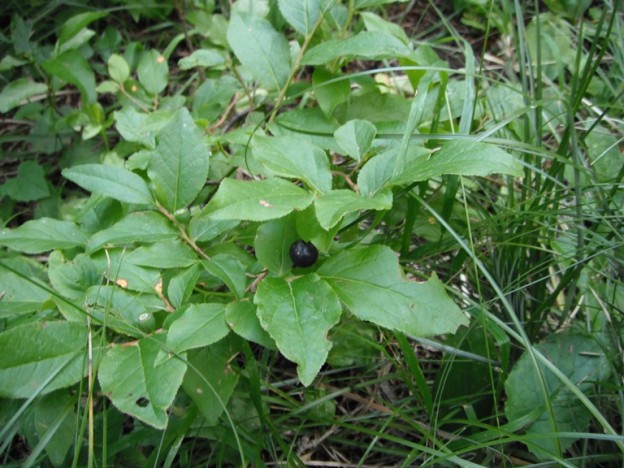
Mountain Huckleberry The Heath Family– Ericaceae Vaccinium membranaceum Douglas ex Torr. (Vax-IH-nee-um mem-brain-uh-SEE-um)Names Names: Mountain Huckleberry is also known as Thin-leaf Huckleberry (membranaceum = thin, like a membrane). It is also known as Big, Black, or Blue Huckleberry. It is Idaho’s State Fruit. Relationships: There are about 450 species of Vaccinium worldwide, about 40 […]
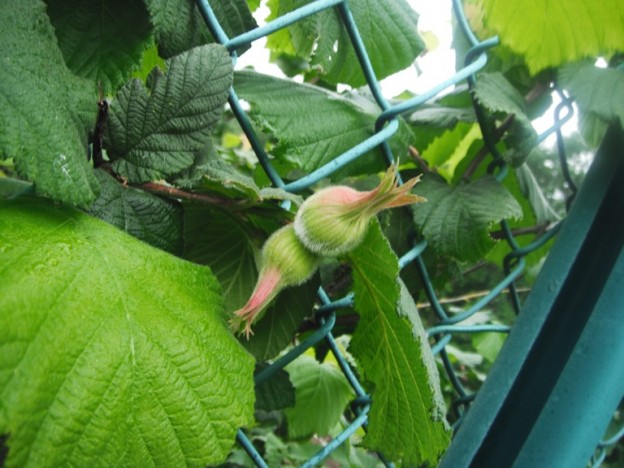
Beaked Hazelnut Birch Family–Betulaceae Corylus cornuta Marsh. (kor-ih-lus kor-NU-tuh) Names: Cornuta means “horn.” The “horn” or “beak” refers to the husk that encloses and projects past the nut. This species is also known as beaked hazel, beaked filbert; American cuckold nut, western hazelnut or western hazel. Relationships: There are about 15 species […]
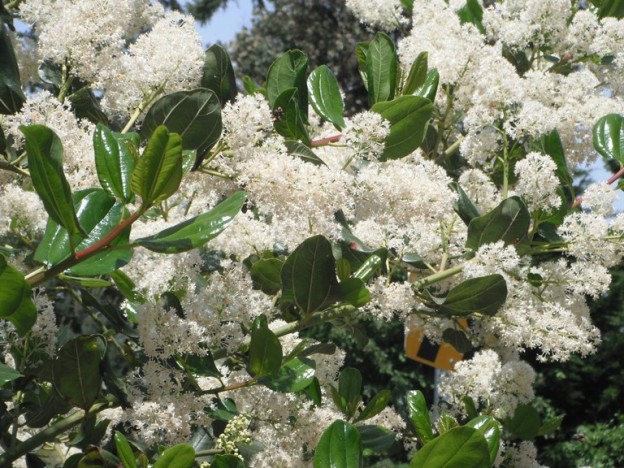
Snowbrush The Buckthorn Family–Rhamnaceae Ceanothus velutinus Douglas ex Hook. (See-uh-NO-thus vel-OO-tin-us) Names: Ceanothus is a Greek name for a spiny shrub. Velutinus means soft and velvety, referring to short, dense, silky hairs on the undersides of the leaves. This feature is more pronounced on shrubs found in drier areas east of the Cascades. When in […]
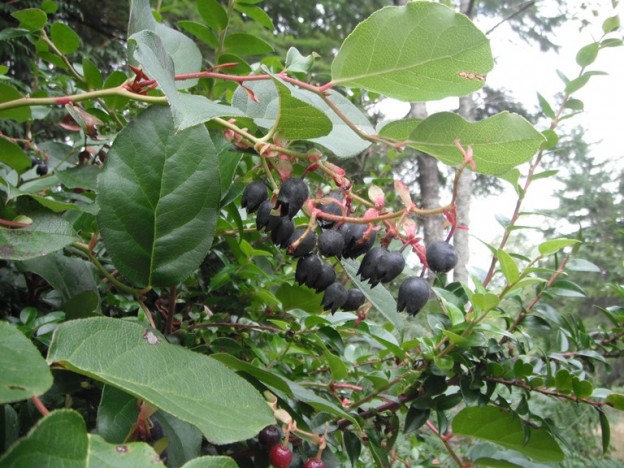
Salal The Heath Family–Ericaceae Gaultheria shallon Pursh. (Gawl-THER-ee-uh shal-LAWN) Names: Salal is also known as Oregon Wintergreen. Its genus name comes from Dr. Hugues Jean Gaulthier, a Canadian Botanist and Physician. Shallon is the name commonly used in Britain where it was introduced—it is derived from its native name, Salal. Relationships: There are […]
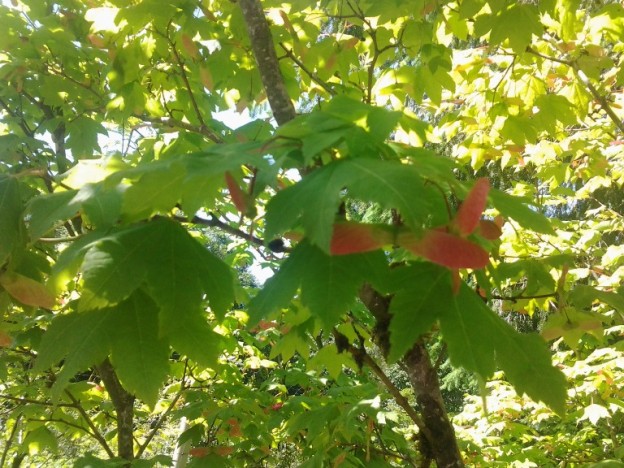
Vine Maple The Maple Family–Aceraceae Acer circinatum Pursh. (Ay-ser Ser-sin-AY-tum) Names: “Vine” Maple, although not really a vine, has very slender, often sprawling, branches. These branches often root to produce new trees, creating dense thickets underneath the shade of taller conifers. It is a small, usually multi-stemmed tree or shrub. Circinatum refers to the […]
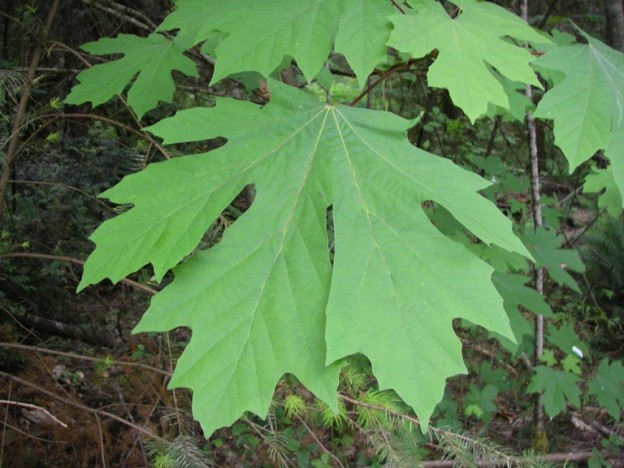
Big-Leaf Maple The Maple Family–Aceraceae Acer macrophyllum Pursh. (AY-ser mak-ro-FILL-um) Names: Big-Leaf Maple, sometimes called Oregon Maple, derives both its common name and its scientific name, macrophyllum, from the fact that it can have leaves up to 12 inches across–the largest of any maple! Relationships: There are nearly 150 species of maples worldwide. […]
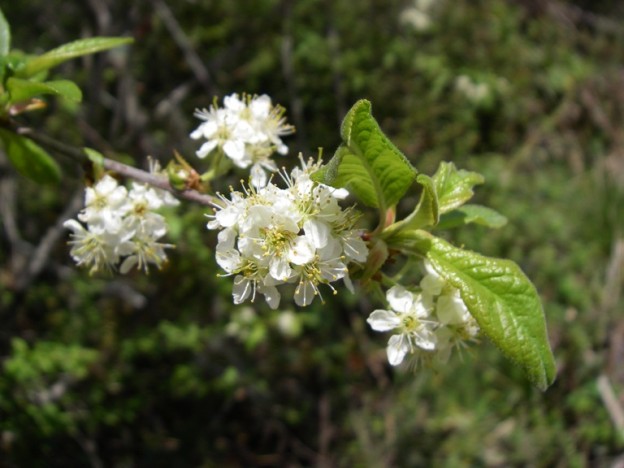
Bitter Cherry The Rose family–Rosaceae Prunus emarginata (Douglas ex Hook.) D.Dietr. (PROO-nus ee-marj-ih-NATE-uh) Names: As the common name suggests, the fruits of Bitter Cherry are very bitter. The fruit is inedible to people. Emarginate means notched at the margins, usually at the tip of a leaf or petal. I am not sure what this […]
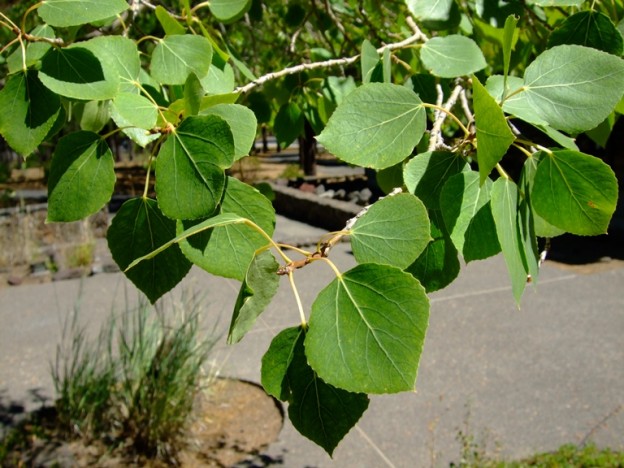
Quaking Aspen The Willow Family– Salicaceae Populus tremuloides Michx. (POP-yu-lus trem-yu-low-EYE-deez) Names: Quaking Aspen is sometimes called Trembling Aspen. All of its names refer to how the leaves will quiver with the slightest breeze. Relationships: There are about 15 species of Populus (Poplars, Cottonwoods and Aspens) native to North America. In our region, […]